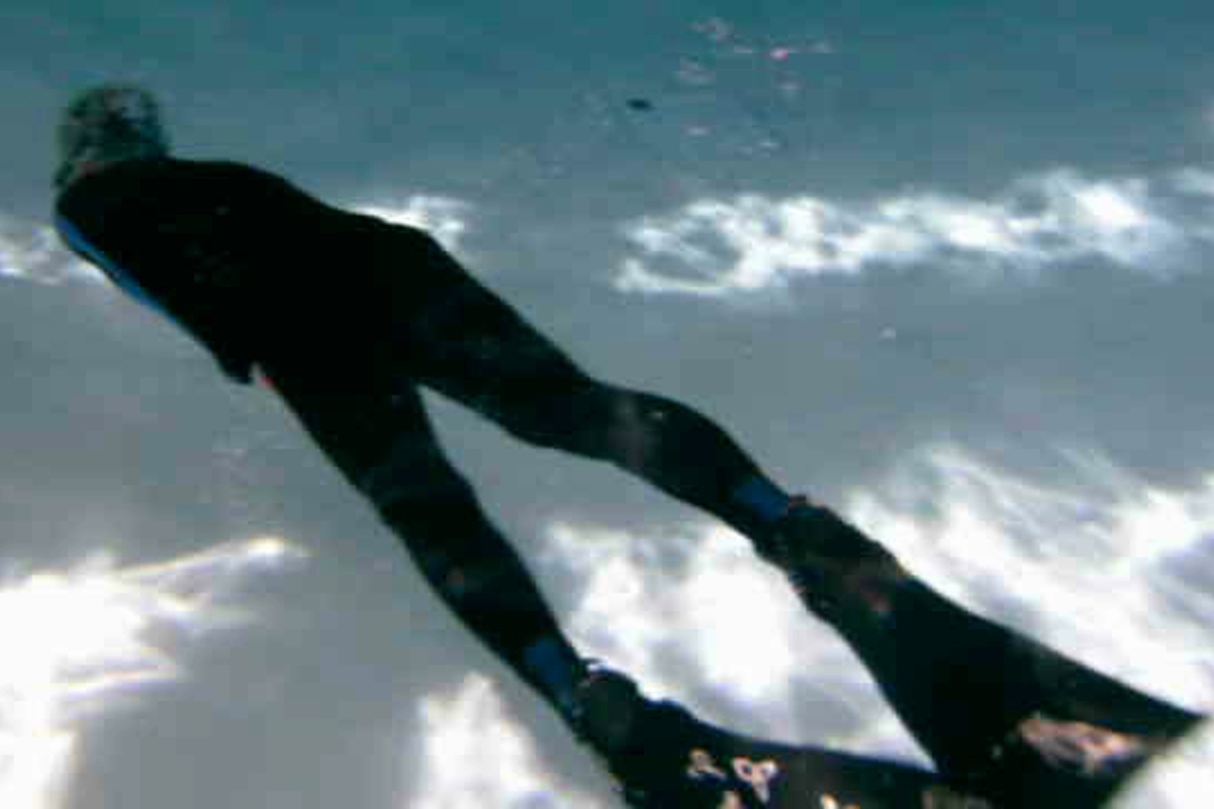To Start the kick begin with both legs in a neutral position straight in back you with a relaxed knee bend, begin your kick by splitting your legs up and down. After only several inches of movement, allow your legs to drift to the outside and extreme respective top and bottom of your kick cycle, rotating your feet in opposite directions.

You will notice your upper moving leg is using the bottom of the fin while moving up and out. While your bottom leg will use the top of your fin while moving down and out. The working surface of your fin changes as you swing your legs back toward the neutral position. The means that you are changing the working surface of each fin 4 times in every cycle. (It is not as complicated as it sounds. Trust me!) Then simply continue the motion, allowing your legs to reverse their upper and lower positions.

The movement is really looks more like offset, opposing sideways squished "U's". Allow your hips and lower back to rotate naturally. You will actually derive a fair amount of power from your hips and back.
The rotating of your feet and legs allows your muscles to work and rest in a very efficient manner. This means your muscles are using less oxygen, creating less carbon dioxide and loading less nitrogen. When we talk about extending dives, your kick and buoyancy will be key.
This kick is very universal in its application. Whether you are crawling along the bottom, carefully moving along a wall or reef or traveling over a gully, you will find it a very easy, relaxing kick that will not empty your tank.
The times it is not as useful are: on the surface (let me know how that works for you!), silty conditions, overhead environments or into the face of a current. With that said, if you are willing to exercise due caution or put some extra effort into it, the split kick can actually be used in nearly all situations...except maybe at the surface.
I added a 10 second video to the Farr Better SCUBA Instruction photo site. (See above tab.) Look on the right side just below the Useful Travel Sites section.
Next time we will look at a modified frog kick. This may be the best friend the extended dive and technical/overhead dive.

